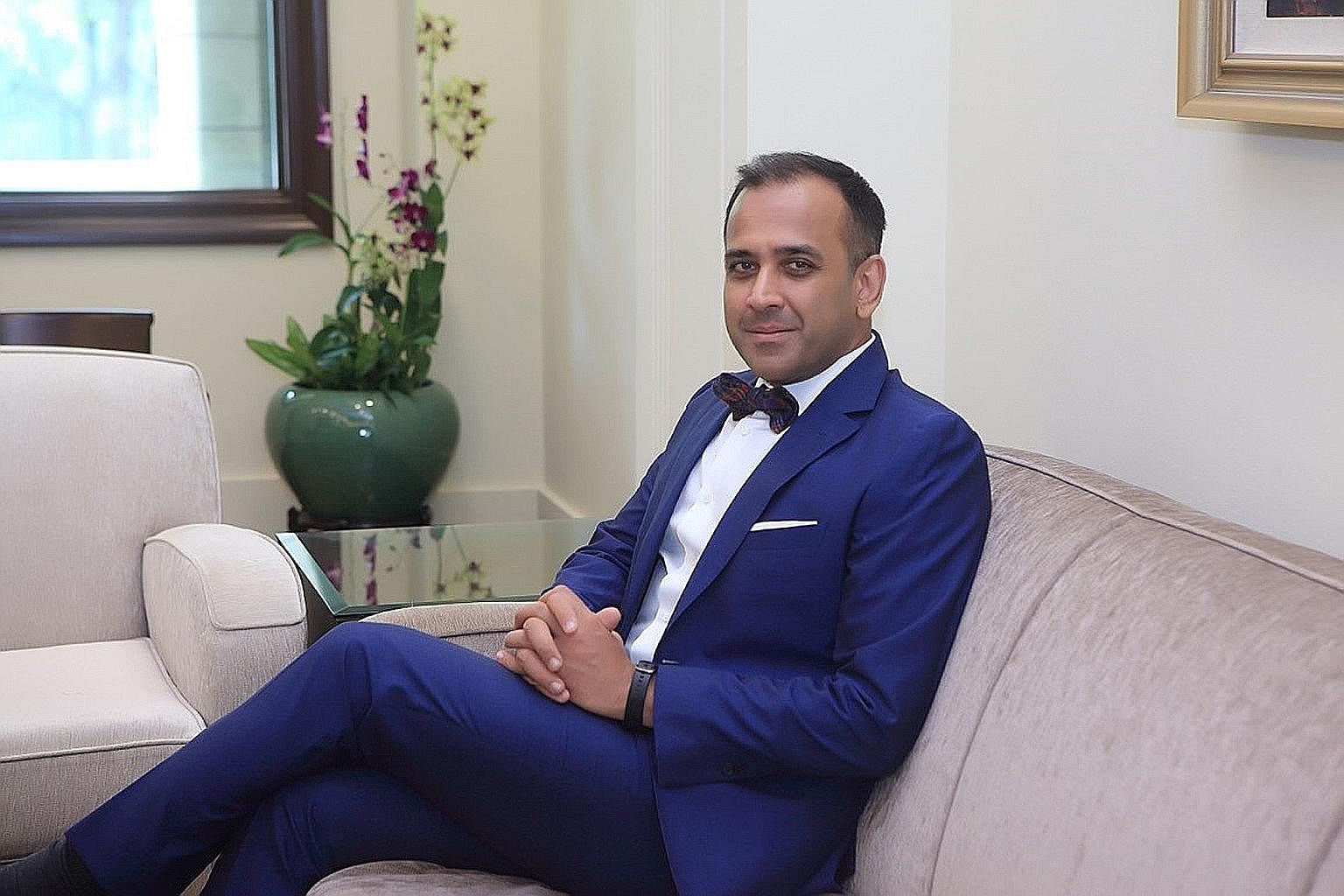AMRITA KAUR
Over a century ago, more than 400 Indian soldiers serving in Singapore turned against their British masters.
The soldiers were known as sepoys, and the mutiny that occurred in 1915 during World War I led to the killings of 44 British soldiers and civilians and five deaths among the local population. More than 200 sepoys were court-martialled and more than 47 were given the death sentence.
Diplomat Umej Bhatia wanted to explore what led the sepoys to turn against their masters.
"I also wanted to understand the motivations of the sepoys who stayed loyal to their British officers. I wanted to rescue them from being one-dimensional props of imperial history or history told from the Western lens."
Mr Bhatia, 48, took 10 years to research and write Our Name Is Mutiny - The Global Revolt Against the Raj and the Hidden History of the Singapore Mutiny, 1907-1915.
The book was launched on Nov 27 at Hort Park, where the first bullet of revolt was fired.
Mr Bhatia places the Singapore mutiny in the larger context of a global revolt against the British Raj that spilled across the Empire.
His layered and nuanced narrative brings to life the sepoy mutineers and their Indian officers and tells of the sometimes bumbling decisions and conduct of the British military officers.
Describing the book as "unfiltered history", Mr Bhatia said he had to mine sources from around the world, including the British Archives in London, archives in Canada and India and the National Archives in Singapore.
He also had to hunt down many old and rare books on Singapore and hard-to-find biographies of Indian revolutionaries as well as inquiry and investigation reports.
Mr Bhatia, Singapore's Ambassador to the United Nations in Geneva and Vienna, said he tried his best to provide a historical re-enactment of the event, including its background and period atmosphere, while remaining faithful to the facts.
"I wanted to connect traditional, top-down history which is about decisions taken by leaders with the bottom-up reality of the foot-soldiers and men and women on the ground who have to carry that history and bear its consequences," said the diplomat.
"The pull of the past, including the perspective of history told from below, and cries of the small voice of history demand to be heard and brought to light.
"Instead of dutifully consuming the standard narrative, if we cannot appreciate what was, or embrace submerged history, we risk missing out on the possibilities for the future. We will also end up uncritically accepting the sketching of events over only the waterline."
Dr Tan Yai Yong, who wrote the foreword, praised Mr Bhatia for "bringing to life the feelings, thoughts, aspirations, fears and sense of isolation of the sepoys as well as what triggered them to do the things they did - turn against the British officers and the political order which they had sworn loyalty to".
Mr Bhatia said that ultimately he wanted to write a book on history that's entertaining to read.
"I wanted to capture the fact that history is a story of its people. History is not about dates, events or larger forces. It's about people, their egos, their weaknesses and their resilience," he said.
"At the end of the day it's a story of human spirit and I hope people enjoy it."
Former politician George Yeo, who was the guest of honour at the book launch, said Our Name Is Mutiny "chases threads that lead us into all continents, to all parts of the world" and "was not a simple story to tell".
"Umej's book does a stellar job in tracing these threads to explain why the Singapore Mutiny is not intelligible in itself, but only against a much wider global landscape," Mr Yeo said. "It is also a story about Singapore as we celebrate our 200th anniversary this year of the founding of Singapore by Raffles."
Mr Bhatia's interest in the Singapore mutiny was piqued about a decade ago when he was browsing at a bookshop in London's Charing Cross Road and came across a yellowed topographical map of Singapore. The map was dated August 1915 - the height of World War I.
It had been printed six months after the British Empire forces crushed the Singapore Mutiny and the Global Revolt against the British Raj in India.
He noticed a marking of a "German Prisoners Camp" at Tanglin Barracks on the map.
"Some of the Germans interned there had been sailors on a German naval ship known as the Emden that had brazenly attacked both Penang and Chennai ports during the war," said Mr Bhatia.
"It had even caused an evacuation of civilians from war-time Chennai. The name of the ship, Emden, is forgotten today in English but in some South Indian languages it denotes swagger and mischief and even became a bogeyman to scare little children."
As he dug deeper, he discovered that there was another ship known as the Komagata Maru, a Japanese steamer that played its part in the great events of the time.
The ship was chartered by a self-taught Sikh businessman Gurdit Singh who spoke Hokkien and Malay and travelled between Singapore and various Malay states to pursue business opportunities. He became inspired by Indian nationalist ideas and led the ship on a quixotic adventure to challenge the race laws of the Empire in British dominions like Canada.
The fate of the ship and other ships of revolt is also part of Mr Bhatia's story of the 1915 Singapore Mutiny.
amritak@sph.com.sg
- Our Name Is Mutiny - The Global Revolt Against the Raj and the Hidden History of the Singapore Mutiny, 1907-1915 is sold at $39.90 in bookshops.
"I wanted to capture the fact that history is a story of its people. History is not about dates, events or larger forces. It's about people, their egos, their weaknesses and their resilience."
- Mr Umej Bhatia





